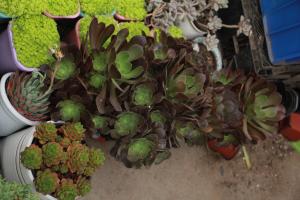1、 Basic introduction
Wild spinach, also known as Rumex, wild radish and wild angelica, is an annual herb of Rumex in Polygonaceae. It is mostly distributed in the northeast and southeast coastal areas of China and higher altitude areas in the south, such as Yunnan and Guizhou. Abroad, it is common on most grasslands in Europe. The plant is about 40 to 100 cm tall. The plant is small and can be harvested all year round. Wild spinach is rich in nutrients, such as vitamin A and vitamin C. It can be eaten directly cold and raw or used as medicine. It mainly has the effect of clearing heat and detoxification. It can also be used for hemorrhoids, skin itching and other symptoms. At present, wild spinach has been planted as a vegetable because of its high nutritional value and good medicinal effect

2、 Breeding method
1. Sunshine: Wild spinach likes sunshine and is mostly distributed in warm coastal areas and places with high altitude and long sunshine time. Therefore, wild spinach is suitable for growing in sunny places, but also in cool places. Under the influence of sufficient sunshine, wild spinach can promote differentiation and grow rapidly. Wild spinach has strong vitality and strong adaptability. It is very easy to feed. Wild spinach can be seen on the roadside

2. Soil: Wild spinach has low requirements for soil, strong adaptability to the environment and fast growth speed. These wild spinach can be found in wet places along the road and in the valleys. They can be planted in wet and fertile places
3. Moisture: Although wild spinach likes sunny places, it also has certain requirements for moisture, which is mainly reflected in the soil humidity and air humidity of the planting land. Wild spinach needs enough water to grow. When water is sufficient, wild spinach will grow vigorously and its leaves will be thicker


 jackfruit
jackfruit snake plant
snake plant hibiscus
hibiscus hydrangea
hydrangea lavender
lavender Green roses climb al...
Green roses climb al... If you don't pay att...
If you don't pay att... Management of four g...
Management of four g...



































